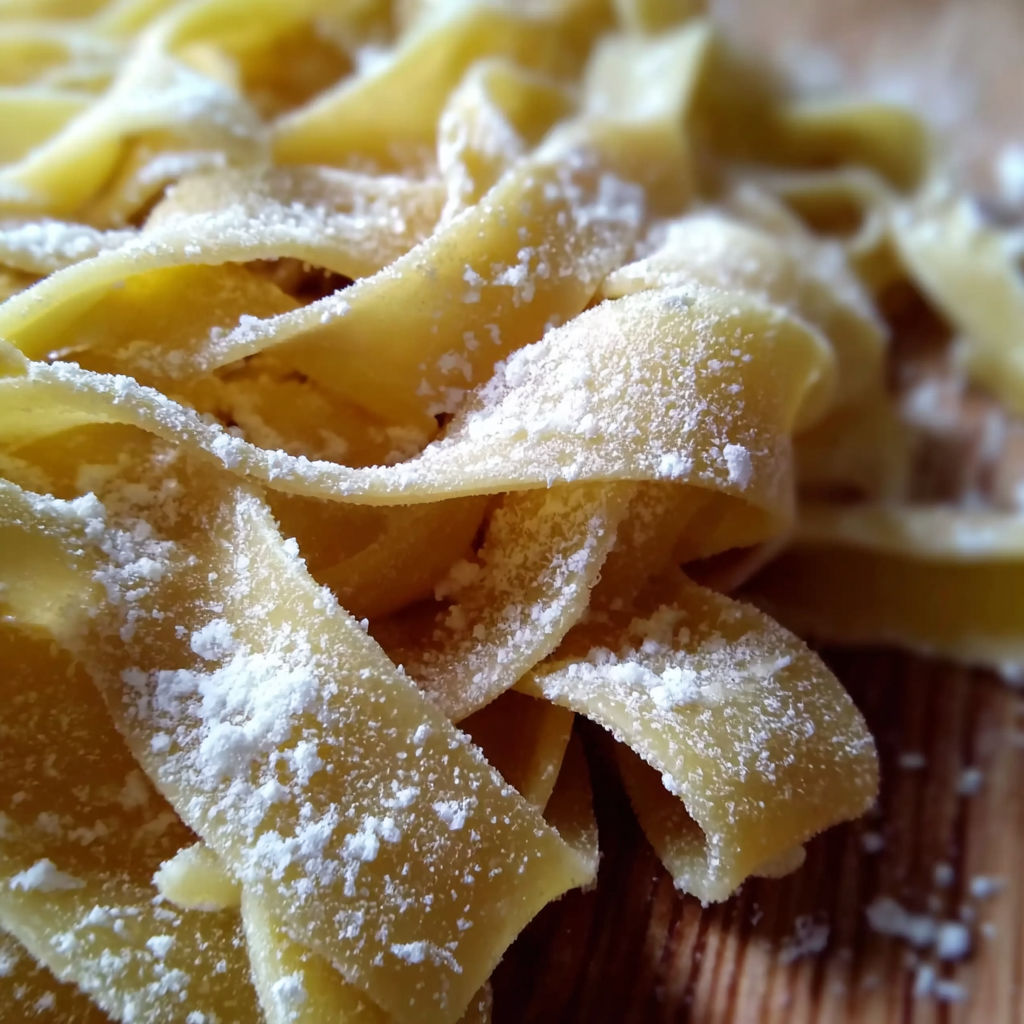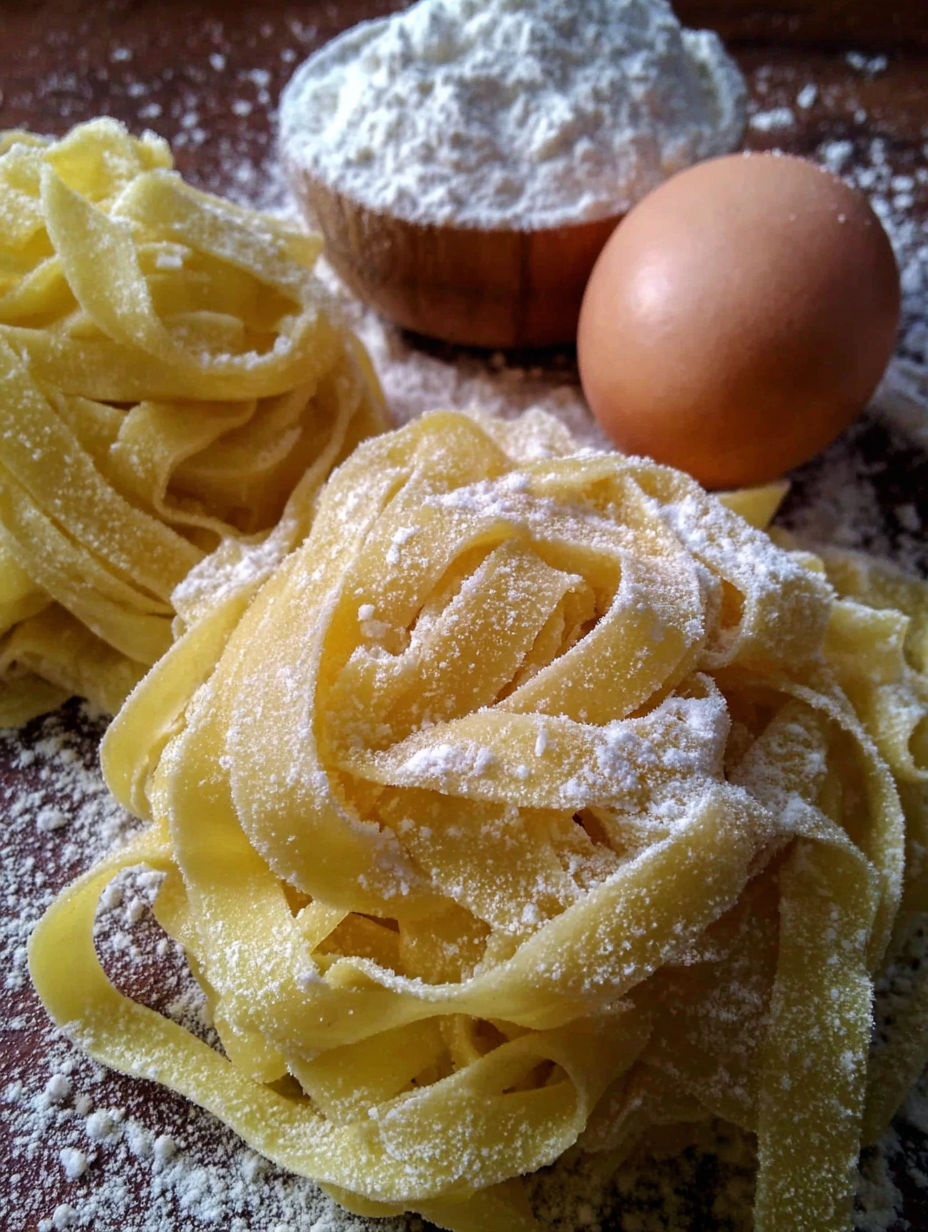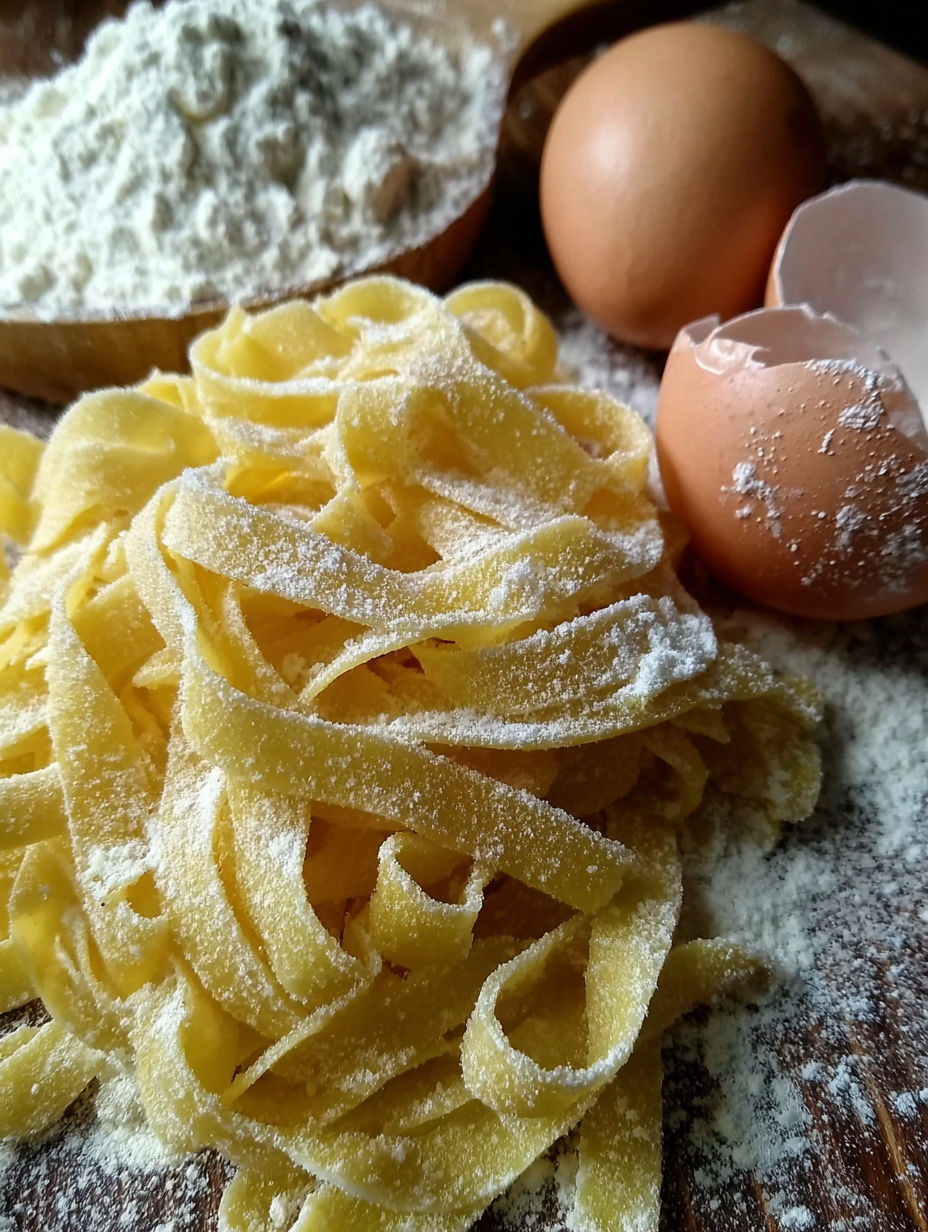 Bookmark
Bookmark
There is something magical about transforming just a few basic ingredients into silky-rich egg noodles that make a humble bowl of soup or a simple weeknight dinner feel completely special. Whether you need a quick comfort meal or want to impress your loved ones with homemade pasta, these noodles deliver unmatched flavor and heartiness straight from your own kitchen. The rhythm of mixing and kneading the dough, rolling it paper thin, and slicing into golden ribbons becomes not just a recipe but a tradition—one that fills your kitchen with warmth and anticipation.
I first learned to make these noodles the year my grandmother passed down her timeworn rolling pin. The first batch was a bit uneven but the flavor and texture—so rich, so tender—made the extra effort completely worth it. Now my family requests homemade noodles at nearly every special occasion and they have become my Sunday relaxation ritual.
Ingredients
- Large fresh egg: Choose the freshest eggs you can find with deeply colored yolks for golden flavor and beautiful hue
- Additional egg yolks: Enhance richness and give the dough its signature yellow color
- Cold water: Keeps the dough together and helps maintain softness during kneading
- Fine salt: Deepens the flavor and gives structure for chewy noodles
- All-purpose flour: Key to the dough’s strength and ability to hold up in soups or sauces Choose unbleached for better flavor
- Extra flour: Dusting is essential for nonstick rolling and cutting
Instructions
- Wet Ingredient Assembly:
- Crack the whole egg and two extra yolks into a medium bowl Whisk thoroughly to combine until perfectly smooth Gradually add cold water as you whisk so the mixture is glossy and even This step ensures the eggs and water blend fully before meeting flour for perfect texture
- Dough Formation:
- Sprinkle the salt directly onto the egg mixture and stir well Begin adding flour a bit at a time using a fork or sturdy spoon to incorporate until clumps start to appear The dough will look ragged but keep going until most of the flour is moistened and shapable
- Kneading Process:
- Move the rough dough onto a lightly floured counter Using the heel of your hand push and fold the dough in a rhythmic motion Continue for eight to ten minutes The dough should grow more supple elastic and have a light shine If sticky add a pinch of flour at a time
- Resting Period:
- Wrap the smooth dough tightly in plastic or a towel and let it sit at room temperature for thirty minutes Resting makes rolling easier and creates a softer more supple finished noodle
- Rolling Technique:
- Cut the dough in half for manageability Dust your work area and rolling pin Roll each piece into a very thin sheet about one eighth inch thick Turn and dust with flour as you work so the dough neither sticks nor tears
- Cutting Method:
- With a sharp knife or pizza wheel slice strips to the desired width If you want hearty noodles go slightly wider For finer noodles go narrow Toss the pieces with extra flour so they do not clump while waiting
- Optional Drying:
- Spread out the noodles and let them sit for fifteen to twenty minutes This helps them firm up and maintain shape or you can move straight to cooking for ultimate tenderness
- Cooking Process:
- Bring a generous pot of water with a pinch of salt to a rolling boil Drop in the noodles Cook for just two to three minutes Taste for doneness—they should be tender with a little bite You are ready to serve

Among all ingredients I get the most joy from using eggs straight from a local farm stand. That vibrant yolk completely transforms the dough’s flavor and color. My favorite memory is making noodles with my son for his birthday when he insisted on twisting a few into spiral shapes that somehow made them taste even better.
Storage Tips
Store uncooked noodles lightly floured and layered in an airtight container in the fridge for up to three days. They are also easy to freeze—spread in a single layer on a tray and freeze solid before transferring to a bag where they will keep for up to three months. Reheat cooked noodles by simmering for a minute in soup or with a splash of broth to refresh the texture.
Ingredient Substitutions
If you want a little earthiness swap up to half the flour for semolina or whole wheat flour. If you need to avoid eggs use two tablespoons of olive oil plus a bit more water—it creates a firmer but still workable dough. Fresh herbs like finely chopped parsley or chives kneaded into the dough add fantastic color and flavor.
Serving Suggestions
Serve the noodles in steaming bowls of homemade chicken soup where their texture shines. Toss with brown butter crisp sage and a sprinkle of Parmesan for an elegant side dish. Pair with creamy mushroom sauce or simply olive oil garlic and lemon zest for a special vegetarian meal.
Cultural and Historical Tidbits
Egg noodles are a storied comfort food in kitchens around the world. From central European holiday feasts to humble Midwestern Sunday suppers these simple ribbons of pasta bridge generations. Rolling and cutting dough by hand is a timeless act that connects us to cooks long ago and to memories of family dinners stretching far into the past.
Seasonal Adaptations
Incorporate finely shredded spinach or carrot into the dough for a burst of color In spring add fresh chives or ramps for a light herbal aroma On colder days swap water for warm chicken broth in the dough for full-bodied flavor
Success Stories
It only takes one afternoon to turn novice to noodle master with this recipe. Neighbors and friends always marvel when they see or taste the difference between boxed and homemade noodles. Sometimes I’ll make a big batch as gifts and the gratitude shows how meaningful simple foods can be.
Freezer Meal Conversion
Flour noodles lightly and lay out on a parchment lined tray before freezing. Once frozen transfer to a sturdy container or bag so they stay separate and are ready to cook directly from the freezer with no thawing needed. Homemade frozen egg noodles make even busy weeknights special.

The act of making homemade noodles never fails to bring people together in the kitchen. Whether you are rolling out dough for a holiday dinner or just a simple meal after a long day you are building both tradition and truly memorable flavor.
Your Recipe Questions Answered
- → How long do egg noodles take to cook?
Fresh egg noodles cook in just 2–3 minutes in boiling salted water. Watch closely for a tender bite.
- → Can I make egg noodles without a pasta machine?
Yes, roll the dough with a pin and cut into strips with a sharp knife or pizza cutter, no special tools required.
- → How do I store uncooked egg noodles?
Dust with flour, store in an airtight container in the fridge for 2–3 days, or freeze for up to 3 months.
- → Why should the dough rest before rolling?
Resting for 30 minutes relaxes gluten, making it easier to roll thin for tender, consistent noodles.
- → What are the best dishes for homemade egg noodles?
Perfect in chicken soup, beef stroganoff, buttered noodles, or tossed with sauce for fresh pasta meals.
- → Can I add flavor variations to the noodles?
Add herbs, spinach, or turmeric to the dough for colorful, flavorful variations to suit different sauces.
